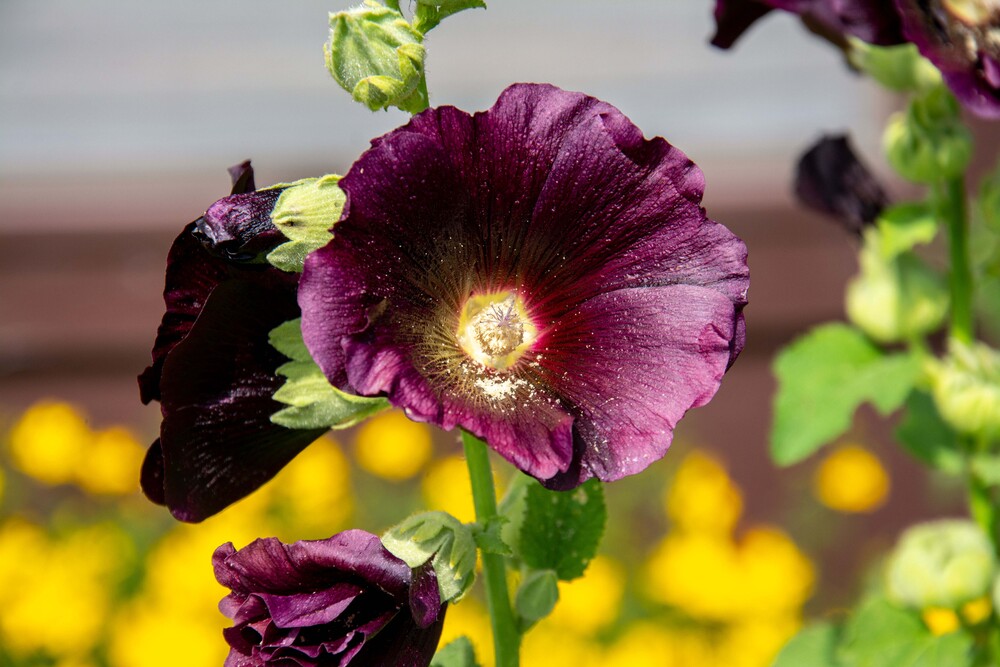How to grow and care for hollyhocks

JACKSONVILLE, Ill. — Hollyhocks (Alcea rosea) have been growing in gardens for centuries and remind many of us of our parents’ or grandparents’ gardens. Despite being ‘old-fashioned,’ hollyhocks have had a bit of a resurgence in recent years. Their tall, stately flowers are an impressive sight in the garden.
Growing hollyhocks
Hollyhocks are native to Asia and are part of the mallow family, along with cotton, okra, and hibiscus. Plants usually grow 3-6 feet tall, but some cultivars can approach 9 feet. Because of their height, they are commonly used as a background plant in a flower border or along a fence or wall.
Flowers will begin opening near the base and proceed up the stem. Individual flowers will remain open for 3 to 4 days, and plants will bloom for around four weeks from late spring to early summer. Red is the most common color for blooms, but they also come in pink, purple, yellow, white, and ‘black.’
Hollyhocks are biennials, growing as a rosette of leaves the first year and producing flowers the second. Occasionally, they are short-lived perennials. Despite being short-lived, they will readily self-seed, allowing them to persist in the garden.
Hollyhocks grow best in a location with full sun and well-drained soil. Given their tall size and tendency to flop, they also benefit from having protection from the wind. If planted in a location that is exposed to wind, they may need staking to prevent damage.
Hollyhock rust
Hollyhocks are susceptible to a few diseases, the most common being hollyhock rust (Puccinia malvacearum). Infected plants will develop orange or yellow spots on the upper surface of leaves (usually starting on lower leaves). Eventually, brown to dark-red bumps will develop on the undersides of the leaves. Minor infections won’t harm the plant. However, severe infections can cause leaves to shrivel and die.
Hollyhock rust can infect several plants in the mallow family, including common mallow, a common weed that can serve as a source of the disease. If hollyhock plants are infected with rust, there are several things you can do:
- Once you notice rust on hollyhock leaves, remove the leaves to help reduce the spread of rust.
- When plants are done blooming, cut infected plants at the soil line and remove and dispose of the plant debris to prevent rust from overwintering.
- Avoid planting hollyhocks densely. This will allow better air circulation that will help plants dry quickly and reduce humidity.
- Avoid getting leaves wet when watering, and water plants early in the day so that if they do get wet, they dry quickly.
- Look for varieties that have some resistance to hollyhock rust.
- A preventative fungicide can be applied to plants BEFORE plants become infected or as soon as infection is detected. Frequent treatments will be needed as new growth emerges.
Miss Clipping Out Stories to Save for Later?
Click the Purchase Story button below to order a print of this story. We will print it for you on matte photo paper to keep forever.

